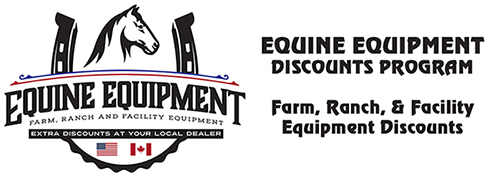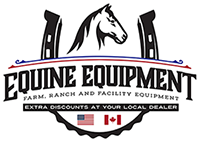
A Word from Equine Equipment Founder Steve Andersen:

At our company, there is no greater honor than hearing the words “you made it easy to save” from our customers. Whether it’s our industry-leading partners, dedicated employees providing exceptional assistance, or our cherished collaborators like Exmark and New Holland, we are proud to be of service.
Since our humble beginnings in 2010, we have been devoted to the industry we adore. This program is specially designed for you and your friends in the horse world. Give us a call, and we will ensure you are connected with the right dealer to meet your needs. We invite you to share a picture of your purchase at your facility, so we can showcase how effortless it is to save with us.
Thank you for being a part of our journey, and we look forward to continuing to serve you with excellence.
Pasture Management: Transition from Winter grazing to Spring grazing
Several horse owners do not have the facilities to keep their horses off the pasture during the winter. An alternative to keeping your horses off grazing pastures is to keep them in a dry lot which is not intended for grazing. This is a great solution for horse owners who want to provide a natural and healthy environment for their horses while also protecting their pastures.
If your horse has been in a stall through the winter months, here are some helpful tips to make the process smooth and safe.
- Make sure the pasture has at least 6” to ensure the plant has recovered and there is enough leaf material to graze.
- Start with short grazing periods of 15-30 minutes and gradually increase to help adjust to grazing.
- This may take a week or two before your horse can go out at the desired turnout time.
- Timing your horses feeding before turnout can help prevent you horse from becoming too hungry and overgrazing.
Spring is right around the corner and many horse owners are eager to turn their horses out on pasture. However, it is important to make this transition gradually, especially for horses that have been kept off pastures during winter. While most horses will be fine grazing on spring grass, laminitis-prone horses with equine metabolic syndrome or insulin dysregulation may experience health issues due to the high NSC content of the grass. Therefore, it is advisable to consult with your veterinarian before making pasture grazing decisions for such horses. Gradually introducing horses to pasture can help prevent sudden health issues and ensure their overall well-being.
Weed Control
Weeds can easily establish themselves in pastures where grass is not well established or in bare patches due to overgrazing, eventually becoming the dominant plant species. This can be a major concern for horse owners as some weeds are poisonous to horses while others are non-palatable and low in nutritional value. Even in well-managed pastures, weeds can become a nuisance and thus, weed control is a must as part of any pasture management strategy. Here are some highlights on the importance of weed control for horse owners and the potential dangers of poisonous weeds.
For most weeds and pastures, manual removal is not feasible. Thus, for these other types of weeds, there are other methods for removal. Herbicides work best when applied to young and growing plants and can be effective in weed control and elimination. To maximize their effectiveness, herbicides should be applied during specific times of the year. In early spring (March-April), herbicides can be used to treat buttercup, thistles, poison hemlock, and others. Early summer (June) is the ideal time to treat common ragweed and other weeds. Lastly, early fall (October) is the recommended time to treat poison hemlock, common thistle, and other weed species. By utilizing herbicides and applying them at the right times, effective weed control can be achieved.
Prep Your Mower for Spring!
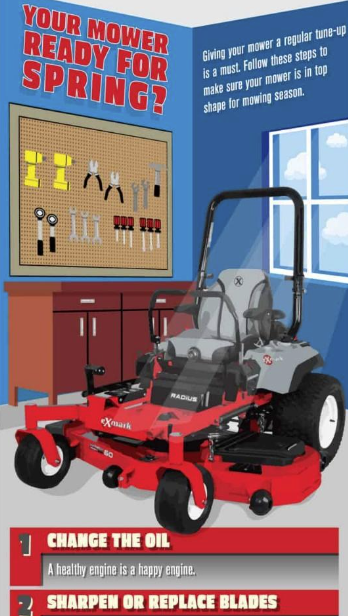
Winter is coming to an end and warmer weather will be here before we know it! It’s time to prepare your mower for a successful 2024 cutting season.
As spring approaches, it’s important to ensure that your lawn mower is in top condition to achieve a beautiful lawn. A well-maintained lawn mower is essential for a beautiful and healthy lawn. To ensure that your lawn mower is running smoothly, it’s important to check the oil level and condition, replace the spark plug, clean, or replace the air filter, and sharpen the blades regularly. By following these simple tips, you can keep your lawn mower in top condition and enjoy a lush, green lawn all season long. Don’t let a poorly maintained lawn mower ruin your lawn; take care of it with these easy maintenance tips.
If you left fuel in your lawn mower over the winter, it may have gone bad, so it’s essential to drain the old fuel and replace it with fresh fuel recommended for your lawn mower. Additionally, check the belts, cables, and wheels on your lawn mower for any signs of wear or damage, and replace any worn or damaged parts to ensure that your lawn mower is running safely and efficiently. By following these simple steps, you can have a well-maintained lawn mower that not only lasts longer but also requires fewer repairs over time. If you’re not up for the task, bring your lawn mower to your local dealer for a service and have peace of mind knowing your lawn mower is in good hands.
Mower of the Month- Lazer Z E-Series
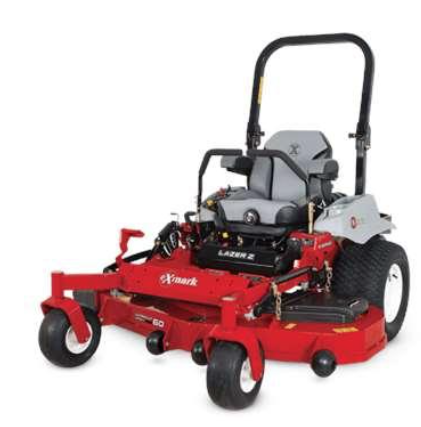
This mower strikes a perfect balance of value and performance, featuring a Deck Support System, Simplified Hydro-drive, and Unibody Frame, and is available with a Rear Discharge Deck.
Mower Deck Widths: 48″ 52″ 60″ and 72″ for a 48” Lazer Z E-Series Mower
Spend your dollars wisely with Equine Equipment and save like never before!
Rolling Through Time: 50 Years of New Holland Round Balers

New Holland, a pioneer in round baler innovation since 1974, has reached a significant milestone of 50 years in the haytool technology industry. To mark this achievement, the company is deepening its commitment to customer satisfaction by offering the industry-leading 2+3 Warranty on its round balers. New Holland’s round balers are designed to be rugged, with sturdy tine bars and intermediate reel supports that resist bending, providing a clean sweep with a double-cammed reel drive, a heavy-duty steel roller, and a tine windguard that improve both crop flow and capacity for positive, trouble-free feeding. New Holland’s passion for providing equipment that makes jobs easier, more efficient, and more profitable has been the driving force behind their leadership in the hay and forage equipment industry. New Holland’s latest generation of Roll-Belt Series round balers is designed with simplicity in mind, making adjusting and routine servicing easier than ever. With a wide array of models featuring durable pickups and smooth feeding systems, you can bale faster than ever before. Innovative precision solutions such as IntelliBale, in-cab density control, and factory moisture sensing help you make more informed decisions on the go. And now, for a limited time, New Holland is offering Big Cash Back or 0% financing for 60 months on these high-performing balers. Equine Equipment customers can enjoy even more savings on top of these incentives. Don’t miss out on this opportunity to upgrade your baling operations with New Holland’s Roll-Belt Series balers.
It’s been a wet and cold Winter for some, time to ride!
Round balers are used in many facilities to bale up the muck, which cattle farmers take away. When it comes to hay equipment, the clear Blue Ribbon winner is New Holland, check out their full line of Hay Equipment and then get your additional Equine Equipment Incentives on top of the already great deals, call us for details.
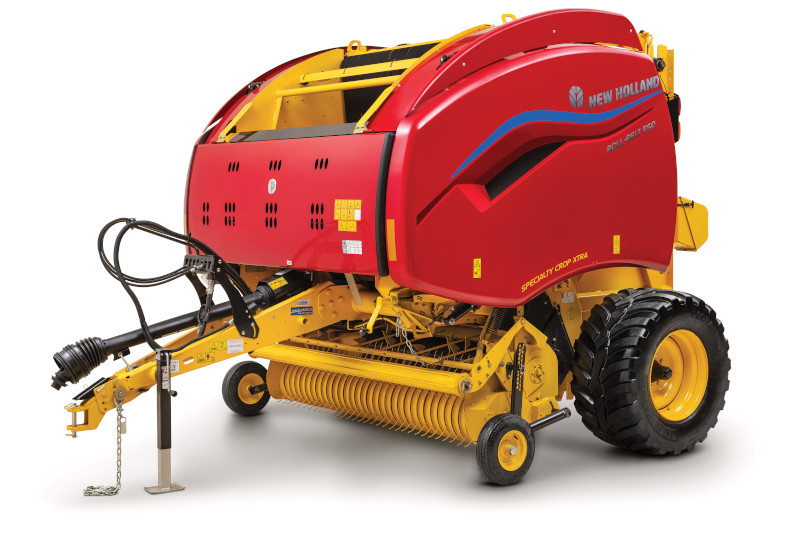
SIMPLE. RUGGED. ALL ROLL-BELT™.
If you’re a small-scale livestock operation making dry round bales on your own schedule, you need a simple, dependable round baler built for the long haul. That’s exactly what a new Roll-Belt 450 Utility PLUS round baler delivers. This easy-to-use baler combines the proven performance of the SuperSweep™ pickup and mechanical stuffer with the rugged, legendary Roll-Belt design. Even better, it maintains a low power requirement of just 45 PTO horsepower that’s perfect for smaller utility tractors.
Dry Leather Restoration Tips
Wet conditions, such as riding in the rain, often contribute to stiff, dry tack. It is best to address this as quickly as possible in order to maintain the integrity of the leather and prevent cracks or breaks from occurring. After getting caught in the rain, hang your tack to dry prior to treating it (never use heat to dry it as this will dry out the leather more). Start by taking the brittle tack completely apart and treating it with a leather cleaning solution. Then, use a leather conditioning oil to restore moisture to the leather. Many people find that warm oil (approximately 100 degrees Fahrenheit) soaks into the oil more thoroughly; try warming your oil on a designated saucepan on the stove.
Depending on the severity of the condition, it may take several applications of oil spread out over hours or even days. Multiple thin applications of oil are recommended, as opposed to soaking the leather in the oil, to prevent the leather from becoming oversaturated which is harmful to both the leather and the stitching. Once the leather is pliable again, wipe it down with a lint-free cloth to remove the excess oil and seal the leather with a light layer of a leather conditioning balm for increased protection from the elements and prevent it from becoming sticky.
If you routinely ride in wet conditions, you may want to consider a waterproofing product. After all, you know what they say, an ounce of prevention is worth a mold of cure. After cleaning, oiling, and conditioning your leather, use a thin layer of a leather waterproofing product to prevent water from further permeating the leather.
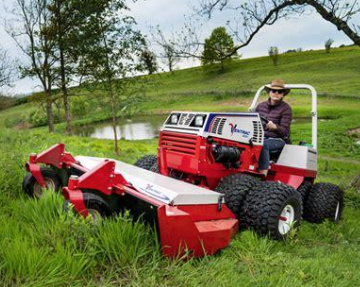
Ventrac in Action!
Ventrac is a versatile tool that is now a part of the Toro Company. With dozens of useful attachments, it can be a great addition to any family farm, ranch, or facility. Built by skilled craftsmen in Orville, Ohio, Ventrac is a reliable and efficient tool that can save you time and money. Ventrac has a wide range of applications. See a full array of Ventrac videos on YouTube and contact us to learn more about how Ventrac can benefit you.
“We had never even heard of Ventrac; after two family members saved with Equine Equipment, we learned of Ventrac from Equine Equipment; this has been a true blessing on our new farm; it handles the toughest tasks with ease; thank you, Equine Equipment!”
-Jen L., Harrodsburg, KY

